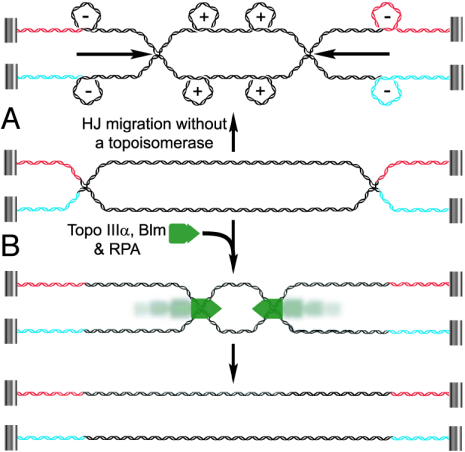Fig. 7.
A model for Topo IIIα/Blm/RPA-mediated resolution of a dHJ. In this illustration, the ends of the DNA are attached to a hypothetically immobile structure to simulate topological constraints imposed on an endogenous dHJ. (A) If the HJs in a dHJ were to undergo convergent migration in the absence of a topoisomerase, negative writhe would be induced behind the migrating HJ, and positive writhe would accumulate in front of the HJ. (B) In the presence of Topo IIIα/Blm/RPA (represented as a green complex), the HJs undergo convergent migration until the linking number between the two DNAs is reduced to zero. Through established protein–protein interactions, it seems likely that these proteins function as a complex, and within this complex, Topo IIIα would be able to perform the strand passage events to unlink the two strands. The association between Topo IIIα and Blm could provide the directionality for the Topo IIIα strand passage events, although it is unclear at this time how directionality for Blm is established.

